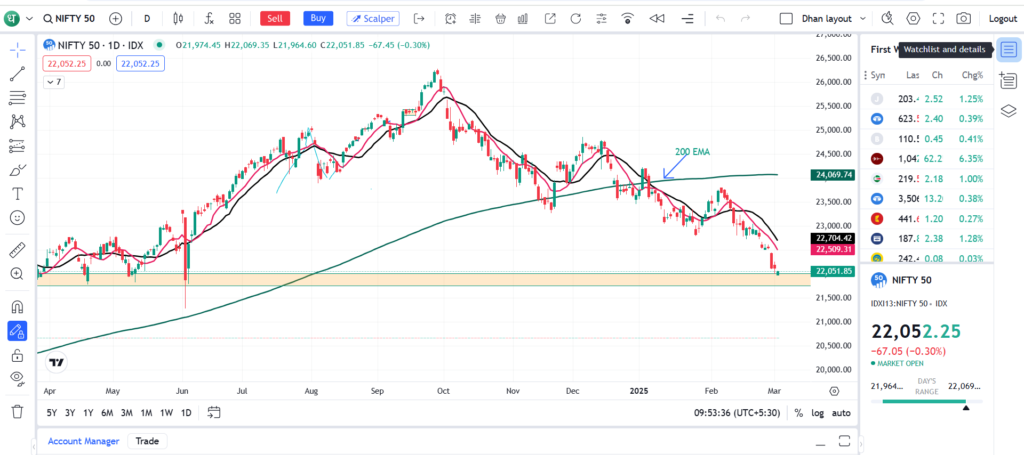
WHERE TO INVEST MONEY IN 2025 ?
Indian Stock Market: The market is set to make a good bounce after a massive fall to date 2 march 2025.This is the right time to invest in NSE, NIFTY 22000 is big support.
The Indian stock market, one of the oldest markets in Asia, has evolved into a vibrant and dynamic financial ecosystem that reflects the country’s economic growth and global aspirations. With a rich history dating back to the 19th century, the market has transformed from a modest trading hub to a sophisticated platform that attracts both domestic and international investors. Today, it is a barometer of India’s economic health and a gateway to wealth creation for millions.

Brief Overview of Indian Stock Market
The Indian stock market operates through two primary exchanges: the Bombay Stock Exchange (BSE) and the National Stock Exchange (NSE). Established in 1875, the BSE is Asia’s oldest stock exchange, while the NSE, established in 1992, is known for its advanced technology and high trading volumes. Both exchanges play a vital role in shaping India’s financial landscape.
The market is divided into two main segments: the primary market, where companies issue new securities through initial public offerings (IPOs), and the secondary market, where existing securities are traded among investors. The benchmark indices, the Sensex (BSE) and Nifty 50 (NSE), are widely tracked to measure market performance.
Is it okay to invest in the Indian market right now in 2025?
The future of the Indian stock market looks promising, with several factors contributing to its growth:
- Digital India initiative: The government’s efforts for digitisation and financial inclusion are expected to bring more participants to the market.
- Global integration: India’s inclusion in global indices such as the MSCI and FTSE is likely to attract more foreign capital.
- Innovation and diversification: The emergence of new sectors such as renewable energy, electric vehicles and fintech will create new investment opportunities.
Key Drivers of Indian Stock Market
1. Economic Growth: India’s GDP growth rate, demographic dividend and growing middle class have made it an attractive destination for investors. Sectors such as IT, pharmaceuticals, banking and consumer goods have shown consistent growth, driving market performance.
2. Foreign Institutional Investors (FIIs): FIIs play a key role in bringing capital and liquidity to the Indian stock market. Their investment decisions often influence market trends.
3. Government Policies: Reforms such as the Goods and Services Tax (GST), Insolvency and Bankruptcy Code (IBC) and initiatives such as “Make in India” have boosted investor confidence. The government’s focus on infrastructure development and digitalisation has also created new opportunities.
4. Retail Investor Participation: The advent of technology and platforms such as discount brokerages have democratised participation in the stock market. The number of retail investors has surged, especially after the Covid-19 pandemic, as people turned to equities for higher returns.
5. Global factors: The Indian stock market is not untouched by global events. Geopolitical tensions, crude oil prices and US Federal Reserve policies often impact market sentiment.
Challenges faced by the Indian stock market
Despite its growth, the Indian stock market continues to face several challenges:
– Volatility: The market remains volatile due to domestic and global factors, making it risky for inexperienced investors.
– Regulatory hurdles: Although SEBI (Securities and Exchange Board of India) has strengthened market regulation, problems such as insider trading and corporate governance lapses persist.
– Liquidity concerns: Small and mid-cap stocks often face liquidity issues, making it difficult for investors to exit their positions.
– Economic inequality: While the market has created wealth for many, a large section of the population remains deprived due to lack of financial literacy and access.
Disclaimer:
We do not recommend direct investing in any stock.